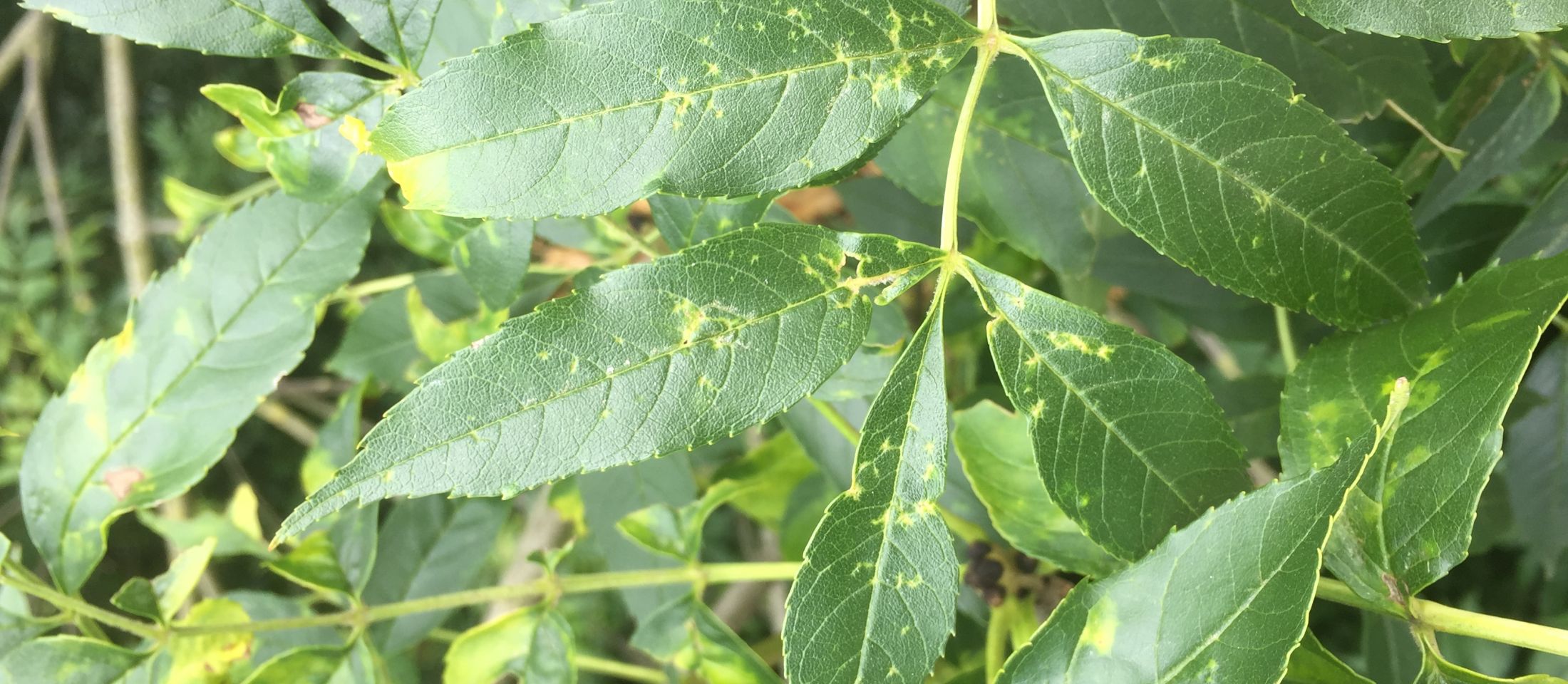
Arabis Mosaic Virus. Photo: Tony Harwood

Arabis Mosaic Virus. Photo: Tony Harwood
The chlorotic (i.e. producing insufficient chlorophyll) mottling of European ash foliage can indicate the presence of arabis mosaic virus. The vector for the virus is the fascinating little dagger nematode (Xiphinema sp.) that transfers the virus to the leaves when feeding. The dagger nematode is a parasite which feeds on and forms galls upon the roots of the tree. Trees growing close to ponds and streams appear particularly susceptible to the virus, as damp habitats favour the dagger nematode.
The impact arabis mosaic virus has on the tree is more aesthetic than injurious. Indeed, the tell-tale yellow mottling betrays yet another fascinating and complex inter-relationship between ash and the wider ecosystem it shares. Whether the exotic fungus (Hymenoscyphus fraxineus) which is the causal agent for ash dieback ever becomes a part of this dynamic but balanced ecosystem (or tears it apart) remains to be seen.